Translating Accurate Diagnosis into Effective Treatment, Part One
Around this time last year, the mental health world was just gearing up for the appearance of the Diagnostic and Statistical Manual of Mental Disorders, Fifth Edition1, DSM-5. Just weeks before, the National Institute of Mental Health (NIMH), the world’s largest funding agency for research into mental health, noted the need for an alternative to the DSM, citing “weakness” and “lack of validity.”
Others observed that “DSM diagnoses are based on a consensus about clusters of clinical symptoms, not any objective laboratory measure” and asked whether “Patients with mental disorders deserve better.”
A year on, the question remains very pertinent.
NIMH went on to suggest what might be inserted into a fuller diagnosis of mental health conditions: Consider mental disorders as biological disorders involving brain circuits; disorders that implicate specific domains of cognition, emotion, or behavior.
Other authorities2 note that the DSM’s classification of addiction is largely limited to physical manifestations that can be objectively observed, in the interest of maintaining an “atheoretical” perspective. DSM-5 relegates other psychiatric symptoms that affect the well-being and social functioning of addicted individuals to the domain of psychiatric comorbidity.
As an example, the relationship between addiction and symptoms associated with depression or anxiety disorders is very close (the association is frequently observed and noted by clinicians and researchers.) However, this doesn’t rule out the possibility that addiction itself may modify pre-existing psychic structures via chronic drug or alcohol use.
The neural mechanisms that are manifested through various behaviors could be worsened or made more chronic through substance abuse. As a specific mental disorder, addiction might include symptoms pertaining to mood, such as depression or anxiety. Addiction itself may have impulse control dimensions that promote cognitive, executive and emotional dysfunction.
We would add that based on observed, underlying emotional processing and regulation deficits, decisionmaking difficulties are inherent in addiction.3 All these symptoms can be included under the umbrella term “emotional dysregulation.”
We believe emotional dysregulation initiates, maintains and perpetuates the disease to its emotionally distressing endpoint—compulsive addictive behavior. It is via emotional dysregulation that the impaired neurobiology of addiction can be made clearly visible.
It’s also illuminating to see that elements of emotional dysregulation are cited as being present in some 75% of disorders listed in DSM-54. Emotional dysregulation may be manifested differently in different disorders, therefore requiring different treatments.
Addiction should be treated as addiction. The emotional distress that drives the sufferer to the endpoint of addiction is illustrated in maladaptive emotional strategies that are similar to, but not the same as, apparent “co-morbidities.” The differences are evidenced through behaviour such as relapse to drug or alcohol abuse.
In short, while it may have similarities to other disorders, the emotional dysregulation that characterizes addiction is not the same.
Pier Paolo Pani and colleagues suggest that the state of addiction reaches beyond the result of drug-elicited effects on the brain. It can’t be equated only with the use of drugs despite adverse consequences.
Addiction is a relapsing chronic condition in which psychiatric manifestations play a crucial role. Thus, its etiology cannot be severed from its psychopathological manifestations, particularly in view of the undeniable presence of symptoms and their obvious contribution to the way addicted patients feel and behave, and to the continued use of substances.
Indeed, the psychopathology frequently precedes the addictive process. This constitutes a predisposing background on which substance effects and addictive processes interact, leading to a full-fledged psychiatric disorder.
References:
1. American Psychiatric Association (2013). Diagnostic and Statistical Manual of Mental Disorders (Fifth ed.). Arlington, VA: American Psychiatric Publishing. pp. 5–25.
2. Pani, Pier Paolo, et al. “Delineating the psychic structure of substance abuse and addictions: Should anxiety, mood and impulse-control dysregulation be included?.” Journal of affective disorders 122.3 (2010): 185-197.
3. Murphy, A., Taylor, E., & Elliott, R. (2012). The detrimental effects of emotional process dysregulation on decision-making in substance dependence. Frontiers in integrative neuroscience, 6.
4. Werner, K., & Gross, J. J. (2010). Emotion regulation and psychopathology: A conceptual framework.
The author notes: “We write under the pseudonym Paul Henry as we are recovering persons who are also PhDs and academics and wish to remain anonymous for now. We discuss how accurately research describes alcoholics in recovery, models relapse, aids effective treatment, or allows families/loved ones to comprehend this neurobiological disease and why alcoholics are the way they are.” Paul Henry’s blogs include Inside the Alcoholic Brain, and The Alcoholic’s Guide to Alcoholism. You can find them on Twitter as Drunken Neuron.
Please Comment Below
[serialposts]

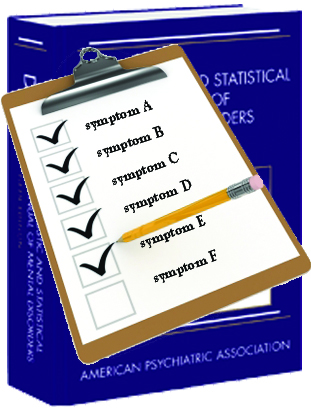

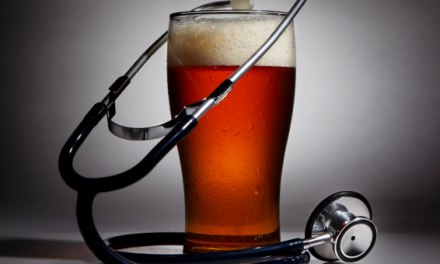
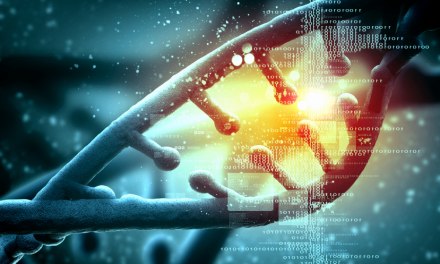
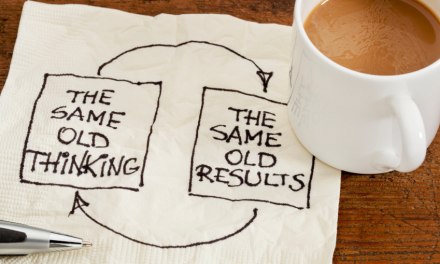


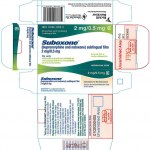





Our work is hoping to address all strata from neuro-biological/endocrinologial to manifest behaviours, e.g. impulse control and decision making deficits as mediated by emotional regulation and processing deficits which usually are also reflective of stress dysregualtion (often the consequence of disruptive early childhood experiences, e.g. abuse, trauma etc). We have looked at Flores and the idea of addiction as an attachment disorder and find great utility in this conceptualisation. In fact, insecure attachment has been demonstrated to be linked to addictive disorders, particularly as the result not only of early parenting but the effects, neurobiologically and emotionally, it has on childhood at risk from future addiction. It appears to be partly mediated by alexithymia which is related to emotional dysregulation and both these appear connected by experiential avoidance, i.e. cutting off emotions, denying them etc and an avoidant emotional coping strategy. In other words some have always had difficulties since childhood in coping with emotions, never learnt how to regulate or process them in an adaptive manner. As we mentioned before this seems to potentiate reward, it makes alcohol more rewarding, so this emotional dysregulation makes one really enjoy the substance that they will use to help them avoid or “cope” their emotions and so a viscous cycle is set in motion. There will be an article on our blog in the next couple of weeks on alexithymia and attachment. We have also just published a blog on how early psycho-analytic theories of addiction viewed it as an emotional disorder and how neuroscientific evidence is now getting to the stage where these view points can be corroborated. http://alcoholicsguide.wordpress.com/2014/06/16/how-far-we-come-in-understanding-this-emotional-disorder/
In fact psycho-analytic views have always been central to the psychological aspects of AA, especially via Bill Wilson and Harry Tiebout and obviously via Jung’s link (plus Richard Peabody, Emmanuel etc) we have always found them helpful but we also like to tie them down with some experimental evidence too. We aim for a global theory of addiction which must be able to explain various strata of influence and also be able to incorporate various and different approaches and theories from whatever schools of thought or academic discipline or from experiential, ancedotal or clinical perspectives. In doing this we can then open up a host of possibilities not only regarding co-operative liaison between different treatment regimes and philosophies e.g. aspects of 12 steps facilitation do appear to fit in with many ACT, DBT and CBT priniciples and we can be much more proactive regarding areas to be address in terms of prevention and early intervention. There are many excellent people doing very similar things in different areas and disciplines, research or treatment and using slightly different language but achieving similar effects. It is useful to address these commonalities of success in treating addiction. We ultimately feel all these treatments can learn from each other, they all have something to teach each other. Even if only to enrich one’s own recovery.
Check out “Addiction as an Attachment Disorder” by Flores. It explains the relationship between insecure attachments and addiction. This also explains how fellowship is an essential element in the recovery process. Childhood trauma is most damaging where there is little emotional support in the home. Tuppet Yates at UC Riverside notes the relationship between insecure caregiving and/or trauma in childhood can manifest NSSI (Non-suicidal self-injury) in the form of addiction and relapse. This is where addiction is not to get high, but is a slow form of self-injury.
References
Flores, P. J. (2004) Addiction as an attachment disorder. New York: Jason Aronsen/The Rowman and Littlefield Publishing Group, Inc.
Yates, T. (2009). Developmental pathways from child maltreatment to nonsuicidal self-injury. Understanding nonsuicidal self-injury: Origins, assessment, and treatment (pp. 117-137). Washington, DC US: American Psychological Asssociation
This dialogue appears to extend the arguments about the definitions of dependency or addiction. It appears to move from psychological in the nature of trauma and attachment disorders; thence to the physiology of brain chemistry. Then we speak of the spiritual malady, which I have described in terms of morality and genetic psychology where guilt and shame can manifest self-destructive behavior. Finally, we look at the sociological elements of addiction where addicts are incarcerated, stigmatized, or present with inadequate social skills. Al of this brings us back to the Bio-psycho-social perspective. We treat the whole person, addressing the most pressing element at the moment. We segue back and forth from one presenting element to the other, each in its turn. We treat the whole person. No matter how you define addiction, the treatment is the same. This is in my book http://www.amazon.com/s/ref=nb_sb_noss?url=search-alias%3Daps&field-keywords=understanding%20addiction%3B%20propensity If you cannot afford the book, email me cobrien1947@yahoo.com and I will make sure that you get a copy.
yes indeed, this is a way in which emotional dysregulation promotes further alcohol use. An unfortunate aspect of emotional dysregulation, particularly in those individuals who have experienced adversive early childhoods, is that this emotional dysregulation also appears to potentiate reward or, in other words, these individuals experience a heightened effect of drinking so that alcohol is not only enhanced in it’s euphoric effect but it also “helps” in escaping or “regulating” emotions, generally by avoiding them (experiential avoidance of emotions is common emotional strategy in alcoholics). This seems to to be the start of the cycle for over half (some say 2/3s) of all alcoholics. So the chain of events you mention has been precipitated by this original connection between emotional difficulties and dealing with them via alcohol and drug use. In order words alcoholics use an external means for dealing with emotions, and increasingly so in the addiction cycle until, the endpoint of addiction in which emotional distress is common place. It is this emotional distress (or increasingly extreme emotional dysregulation) that prompts compulsive use. So emotional dysregulation is there in terms of “pre-morbid” vulnerability, initial use and it’s enhanced effects all the way through to compulsive use. We have to learn emotional coping skills to recovery in fact as our control, labelling and processing of emotions has become incredibly impaired (also increasingly via the neurotoxic effects of alcohol on brain regions involved in emotional recognition, control and processing). We need to learn emotional coping skills in order to live with ourselves and others in emotionally adaptive ways.
to refuse the truth is to deny it, which hence leads to deppresssion ( as most think they have ) then the drink is taken bcause they can not handle the low feelings
Not worthy !!
Nobody wants to know.
If only they Knew
BLAME BLAME BLAME
. I think just go and have a good drink<
RELIEF
temporary.
and the cycle begins again
ALCOHOLISM !!!!!
different names are used for similar things “addiction”, “substance dependence”, “substance use disorders” etc Regardless of how we name it, “addiction” appears to be the endpoint of a cycle from initial use to “wanting” (abuse) to compulsive addictive behaviours, when there is limited cognitive control over these addictive behaviours. This is a more automatic response to the emotion distress that also appears to increase as addiction becomes more severe. Interestingly, obsessive intrusive thoughts about alcohol or drugs seems to increase also in line with severity (intrusive thoughts may also the consequence of emotional dysregulation) . This addiction severity is also seen in memory, affective, and reward systems of the brain becoming more dorsal striatal based, i.e. procedural, implicit and done with little forethought or awareness of negative consequences. In a sense addiction becomes more motoric and subcortical with little awareness on the part of the addict of these processes. So one is either on this spectrum of severity or not I suppose? This cycle also seems mediated by emotional difficulties in many, especially as the result of disrupted childhoods, where stress and emotional regulation enhance the effects of initial drug use and perpetuate the addiction cycle.
Sounds like we are sorting out things…a good start.
But I struggle with the actual word “addiction”. I never NEEDED alcohol to stop withdrawal symptoms…..I’d go without a week or more….or drink 2-4 at night and not the next day…. but then binge X 3 days…..never longer…ever. Then I’d stop.
I could predict when I would have trouble stopping….underlying emotional crap going on….but the days I didn’t drink, I wasn’t technically “addicted”. I haven’t had a drink for almost 3 years. Right now, I’m not addicted. Am a I still an addict?
Hard to define…….still.
Joyce